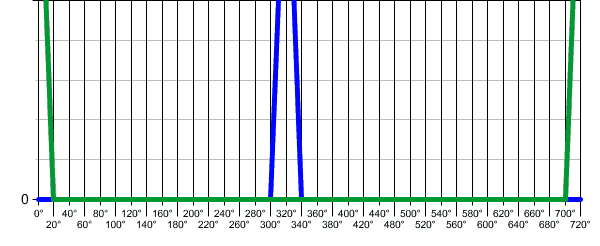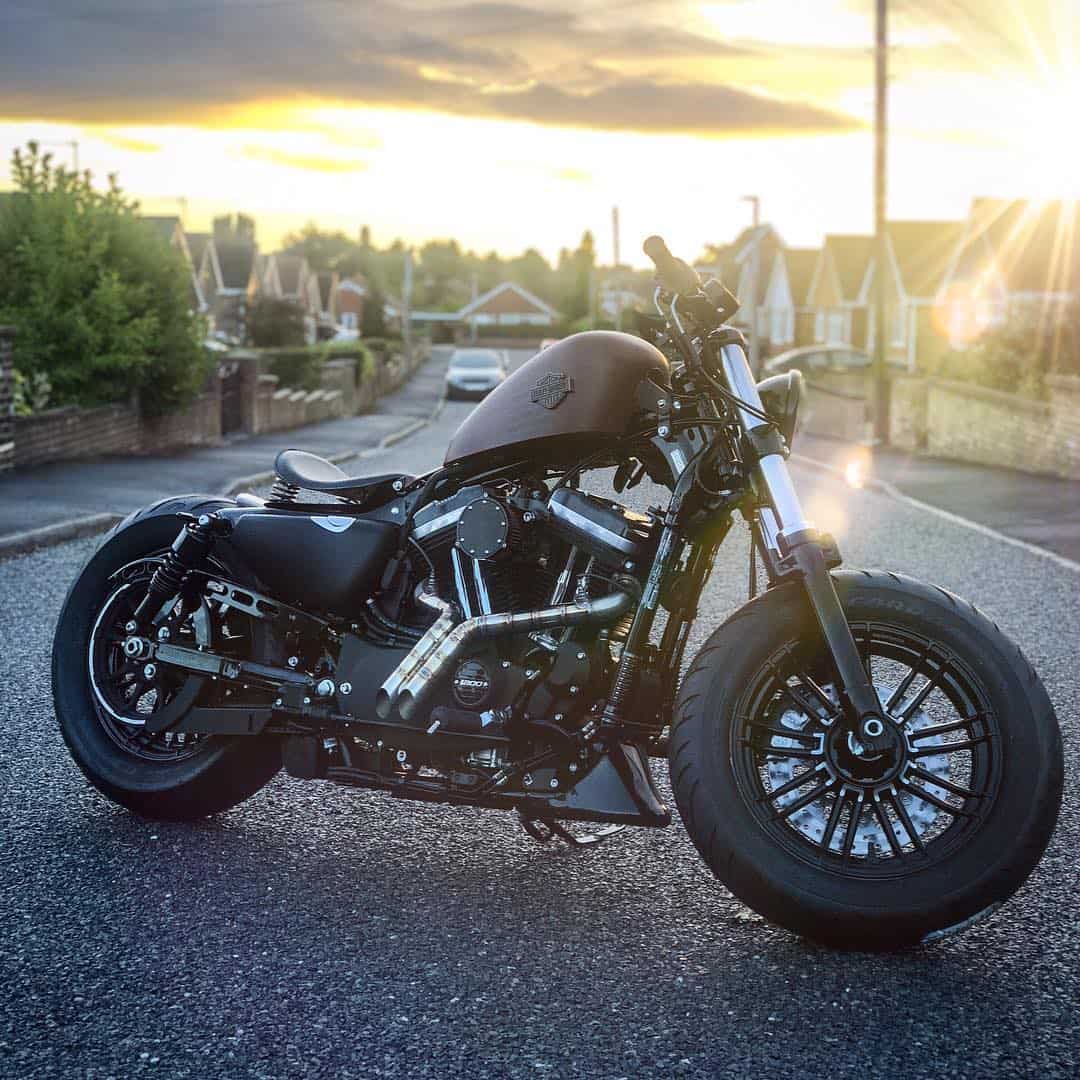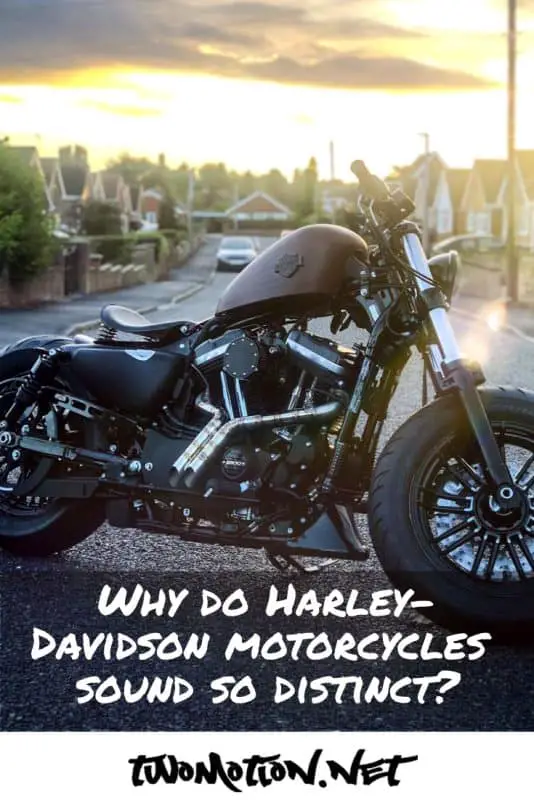Harley-Davidson motorcycles have a very unique and distinct sound to their engines. This is because of how the engine is designed with its V-Twin cylinder configuration. But the sound at idle speed seems to be random as if there is no specific repetition in the rhythm.
Overview
In this article, we discuss what Harley-Davidson motorcycles sound like and why they sound this way. We also look at the very unique rhythm the engine makes and if it is really as random as it seems to be.
We will discuss the following:
- What do Harley-Davidson motorcycles sound like?
- Why do Harley-Davidson motorcycles sound this way?
- Is the Harley-Davidson rhythm random?
- Is there a formula to the Harley-Davidson rhythm?
What do Harley-Davidson motorcycles sound like?
“Some engines hum. Some whine. Others roar. But Harley-Davidson motorcycle engines rumble. Harleys produce a low, deep-throated, somewhat syncopated vibration many aficionados describe as “potato-potato-potato-potato.” The sound is so distinctive – and so closely associated with the brand – that Harley-Davidson once sought to have it trademarked. (The company ultimately withdrew the application.)”
An extract from Las Vegas Review-Journal
Read the article…
Something you might find interesting to read about Harley-Davidson and an attempt to patent the sound of their motorcycles: THE TRADEMARK REGISTRABILTY OF THE HARLEY-DAVIDSON ROAR (pdf file).
But let’s put all the interesting facts aside for a moment. Below is a sound recording of a Harley-Davidson motorcycle. The motorcycle is stationary throughout the whole recording. The engine is started and left to idle before some throttle is applied briefly three times. At the end of the recording, the engine returns to idle.
Why do Harley-Davidson motorcycles sound this way?

Green: piston 1, Blue: piston 2
“The 45° design of the engine thus creates a plug firing sequencing as such: The first cylinder fires, the second (rear) cylinder fires 315° later, then there is a 405° gap until the first cylinder fires again, giving the engine its unique sound.”
Extract from cyclefish.com
Read the article…
What this means is that each piston fires only once every 720° but they are not evenly spaced out. The above graph shows when the pistons fire according to the position of the crankshaft (in degrees). But note that the sound it makes does not match this graph.
Is the Harley-Davidson rhythm random?

When the engine is running at higher rpm’s it’s definitely not random. Normally, engineers try to get their engines to run at an equilibrium where the time between each piston or set of pistons firing is the same. This may be true for Harley-Davidson motorcycles when they reach a certain engine speed but not when idling.
The time between each piston firing differs and when we look at the graph above, there seems to be no specific rhythm at which the engine runs at idling speed. This graph represents the time between each piston firing which I was able to determine by opening a sound clip in a visual format (image below) and measuring the distance between each peak (marked with a green line).

At first, you might dismiss the data as being completely random or as random with certain constraints. But I think this is not random. It might be pseudorandom but there should be a way in which we can formulate what the engine sounds like.
The video below might give you an idea of how data that looks random might not be as random as you think. I recommend watching the first six and a half minutes.
Right, so we can see from the video that data might not be as random as we thought just like our graph with the time between each piston firing. But is the formula that Derick shows in his video applicable to a Harley-Davidson engine? Well, not exactly. But we can start off the same way by factoring in all the constraints and it would be related because we start with the same principles in mind.
Is there a formula to the Harley-Davidson rhythm?
This isn’t something you can just quickly calculate if you don’t have all the data that the engineers have at Harley-Davidson. I think it’s definitely possible to measure and maybe finetune with trial and error but I’m not a mathematician and don’t really want to do H-D’s patent work for them.
But we should make a list of few things as factors to use in our formula:
- Combustion energy
- Friction
- Piston compression
- Combustion intervals (in degrees)
To simplify the general idea of what’s going on, we can explain what’s happening: Depending on how fast the engine is moving at the moment of the current piston is firing, the time it takes the next piston to fire will either be shorter or longer.
This will have to do with the first three items on the list. It would be something like Combustion Energy(c) – Friction(f) – Piston Compression(p) because they are working against each other. This would take the place of “r” in the equation.
So it might look something like this:
xn+1 = rxn(1 – xn)
↕
xn+1 = (c-f-p)xn(1 – xn)
But we also need to consider the combustion intervals because unlike most engine manufacturers, the pistons don’t fire in equal intervals (in degrees) if you measure the position on the crankshaft when the pistons fire. So you will have two separate formulas; one for each piston that is used correspondently for when that piston fires.
Unfortunately, I’m not equipped with the mathematical skills to formulate the time it takes a Harley-Davidson to fire each piston. I was never really good at maths and didn’t like it much either. But I’m very interested to see what it would look like.
Final words
Harley-Davidson has been one of my favourite brands of motorcycles and I have often wondered how the new street fighter of theirs will sound like which is why I started looking into what makes them sound this way. I hope you found this as interesting as I do.
Featured image by limitless_customs on Instagram
I always try to keep my articles interesting and informative. And I’m always thankful when they are shared on social media platforms or Pinterest.


